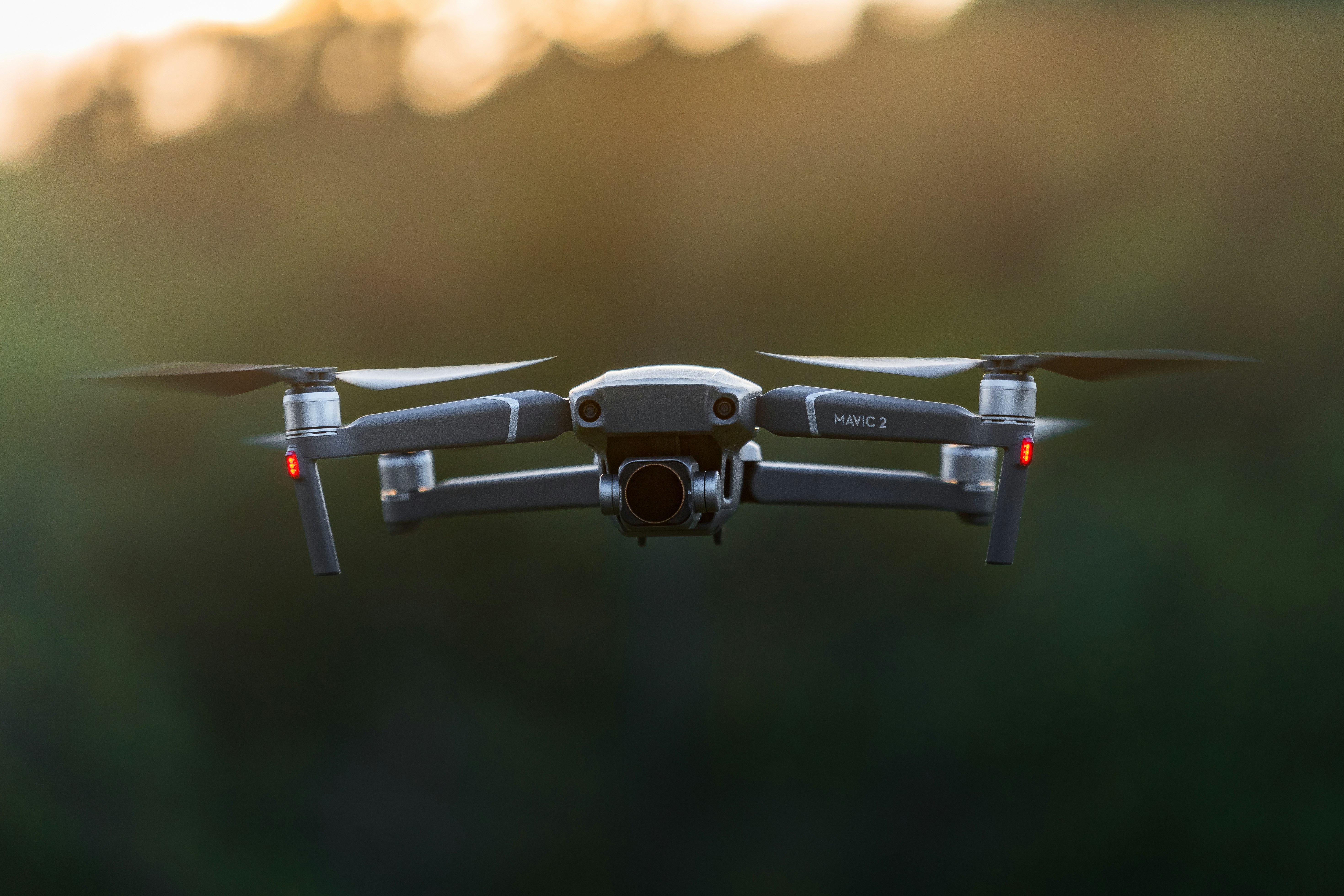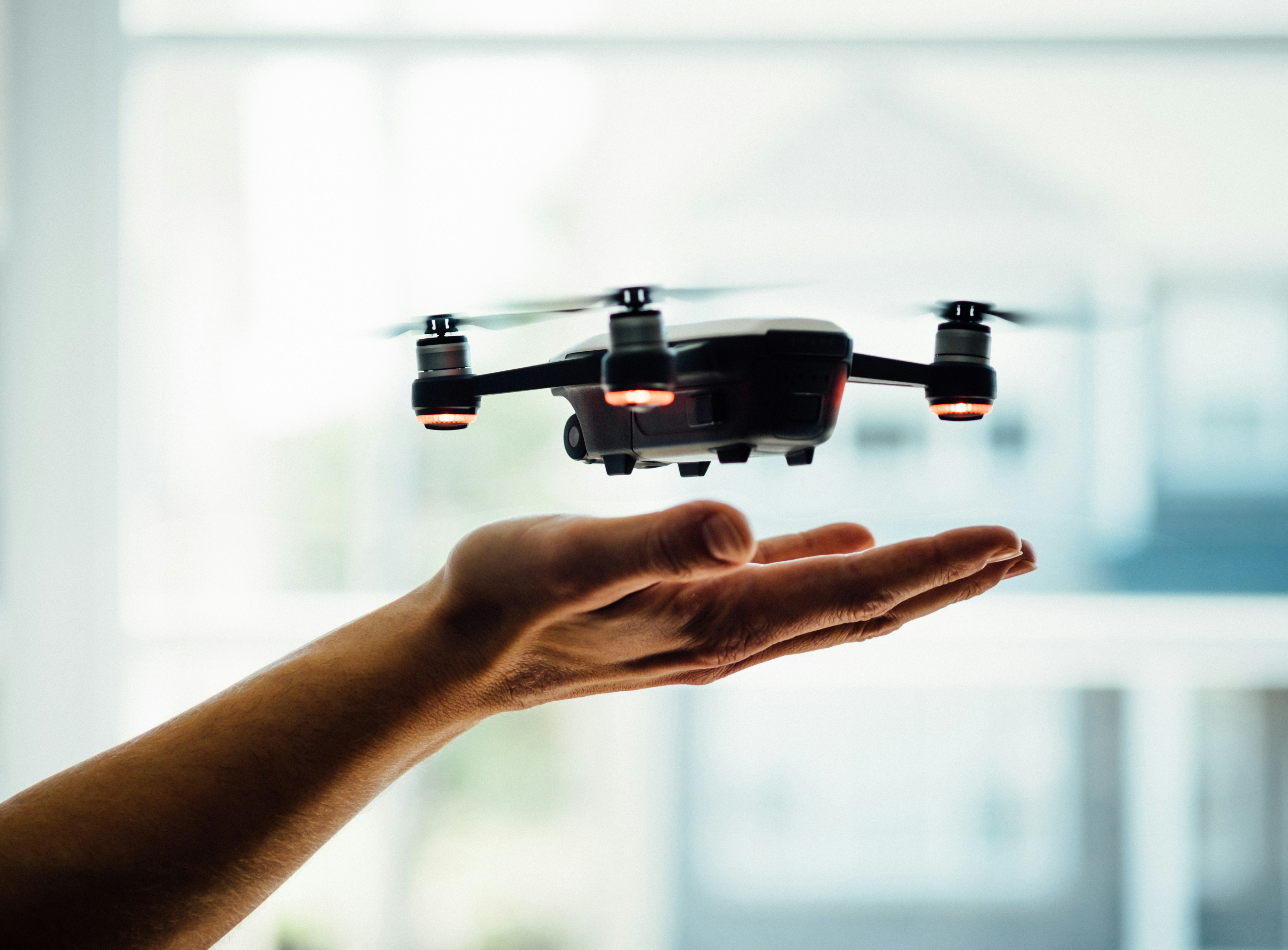
Rural-Remote UAV Jobs: Charting New Flight Paths Beyond the City
A New Horizon for Drone Enthusiasts
Unmanned Aerial Vehicles (UAVs) have soared from niche military tools and hobbyist gadgets to an essential technology across a broad range of sectors—from agriculture and mapping to construction and public safety. Historically, those seeking a career in UAV technology might have assumed they needed to live in a bustling city hub or near major airports to stand a chance of landing a good role. But times are changing. Advances in remote communication, cloud-based data processing, and drone autonomy now enable professionals to work on sophisticated UAV projects from almost anywhere in the UK, including rural and coastal regions.
At UAVJobs.co.uk, we’re witnessing a significant shift. More employers are open to hiring remote UAV pilots, data analysts, software developers, and project managers—provided they can access reliable internet and handle occasional on-site visits. Likewise, an increasing number of professionals are seeking “tech jobs by the sea” or “UAV remote countryside” roles, motivated by rising urban living costs, quality-of-life aspirations, and the growing acceptance of distributed teams.
In this article, we’ll explore why “rural-remote UAV jobs” are no longer a pipe dream, the benefits and challenges of stepping beyond the city, and how to position yourself for success if you’re ready to settle among rolling hills or scenic coastlines. Whether you’re a seasoned drone pilot, a software engineer working on flight autonomy, or a GIS analyst processing aerial data, you might be pleasantly surprised by the opportunities waiting for you outside metropolitan areas.
1. The Rise of Remote UAV Work
For the longest time, drone operations seemed tethered to physical proximity. After all, piloting a UAV in real-time traditionally required being on site. However, rapid evolutions in technology and work culture are reshaping these assumptions:
Advanced Drone Autonomy: Many UAVs can now fly pre-programmed routes, manage take-off and landing automatically, and even avoid obstacles using onboard sensors. While oversight is still necessary, a pilot can supervise multiple craft remotely, checking in via live streams or telemetry dashboards.
Cloud-Based Flight Planning and Data Processing: Drone mission planning software like DroneDeploy, Pix4D, or DJI FlightHub often runs on cloud servers. Operators anywhere in the world can upload flight paths and retrieve aerial data, drastically reducing location constraints.
BVLOS (Beyond Visual Line Of Sight) Regulations: Regulatory bodies—including the UK’s Civil Aviation Authority (CAA)—are gradually expanding permissions for BVLOS operations, under strict conditions and safety checks. This shift opens the door to more advanced remote pilot roles, where operators might only intermittently need to be physically present.
Global Teams: UAV projects—whether they’re in agriculture, infrastructure inspection, or environmental conservation—often span vast geographies. A single firm may oversee drone fleets deployed across multiple sites, requiring data analysts, software engineers, and project leads to coordinate virtually.
Flexible Work Culture: The COVID-19 pandemic pushed many organisations to adopt remote or hybrid working. This new norm has proven that essential tasks—such as mission planning, data interpretation, and flight software updates—don’t demand a centralised office.
Combined, these factors herald a decentralisation in the UAV sector. While certain tasks (e.g., physically handling hardware or charging batteries) are location-specific, numerous other functions—like mission programming, data processing, or pilot oversight—can be done from the comfort of a home office in the countryside.
2. The Allure of the British Countryside
Rural Britain conjures images of patchwork fields, quaint villages, rugged coastlines, and open skies dotted with wildlife. For tech professionals used to crowded commutes and packed apartment blocks, the appeal of a slower-paced, nature-rich environment is undeniable. Here are some key reasons why UAV specialists are increasingly swapping the urban rat race for fresh air:
Cost of Living
Many rural locations remain substantially cheaper than cities like London, Manchester, or Edinburgh. If you’re earning a competitive UAV-related salary, you can afford a larger home, potentially with outdoor space to safely test smaller UAVs or tinker with drone modifications.Improved Wellbeing
Numerous studies link rural or coastal living with lower stress levels and better mental health. UAV roles can be mentally demanding—from managing flight logistics to interpreting complex GIS data—so having an environment conducive to relaxation can boost overall productivity and creativity.Outdoor Lifestyle
Drone enthusiasts often enjoy exploring the outdoors, be it for aerial photography, wildlife conservation, or hobby flying. Living in proximity to nature offers countless opportunities to test UAVs in diverse terrains or simply enjoy personal flights (within legal regulations, of course).Community Spirit
Smaller towns and villages often have tighter-knit communities, local events, and traditions—elements that can foster a sense of belonging which city life doesn’t always offer. This can be especially refreshing for those seeking a healthier work-life balance.Unique Business Opportunities
Rural or coastal areas have specialised industries—like fisheries, farming, tourism, or wind farms—that can benefit from drone technology. UAV professionals living locally can become the go-to experts for aerial surveys, inspections, or promotional video content.
In short, stepping out of the city bubble can be both personally and professionally rewarding. And with remote UAV roles on the rise, that move might be easier than you think.
3. Debunking the London-Centric Myth in UAV
London has long stood as the UK’s go-to location for tech and finance roles, a magnet for venture capital and large corporate offices. Yet the UAV industry is spreading its wings beyond the M25:
Regional Aerospace & Innovation Clusters: Areas like the South West (Bristol), Wales (Swansea, Cardiff), and the North East (Teesside) have active aerospace or UAV research clusters. Many smaller UAV start-ups have adopted remote or hybrid setups from day one, letting staff live nationwide.
Specialised Rural Applications: Agriculture, conservation, and land management are prime UAV use cases. Drones equipped with multispectral sensors or thermal cameras can track livestock, survey crops, or monitor wildlife. Being closer to farmland or reserves can actually boost a UAV professional’s marketability.
Local Funding & Innovation Hubs: Councils in rural counties sometimes sponsor tech innovation hubs or provide grants to encourage digital transformation. UAV entrepreneurs or freelancers could find fertile ground for pilot projects that city-based firms overlook.
Lower Overheads: For UAV services companies, renting office or workshop space outside major conurbations significantly reduces overheads. It’s thus more financially feasible to run a remote team or decentralised operations.
Global Mindset: UAVs often serve international markets, from surveying coastal erosion to delivering medical supplies. Provided you have robust communication tools, you don’t need to be in a city to coordinate transnational operations.
Consequently, not only is it possible to succeed in UAV outside London, but in certain respects—such as forging direct ties with agricultural clients or specialising in local tourism videos—it can be advantageous to live beyond city limits.
4. Infrastructure and Connectivity in Rural Areas
For UAV professionals (pilots, data analysts, software devs, or mechanical engineers), stable internet and computing resources are key. Historically, spotty broadband was a significant concern outside urban areas. But the landscape is shifting:
Broadband & Mobile Data
Fibre Rollouts: Many rural communities now access fibre-to-the-cabinet (FTTC) or fibre-to-the-premises (FTTP) with speeds of 50–300 Mbps or higher.
4G/5G Coverage: A strong 4G or emerging 5G signal can sustain HD video calls and data transfers needed for UAV footage or real-time teleoperation. A mobile hotspot can serve as a fail-safe if broadband falters.
Satellite Internet: Services like Starlink are increasingly popular, offering decent download speeds and improving latency for areas lacking terrestrial networks.
Cloud Platforms
Much of UAV data processing—like photogrammetry or machine learning for object detection—takes place on cloud servers (AWS, Azure, Google Cloud). That means you only need reliable upload/download capabilities, not necessarily local HPC hardware.
UAV-Specific Tools
Drone flight planning, telemetry monitoring, and asset management are often web-based or run via apps. As these systems evolve, you can log into a secure portal, load flight paths, or review sensor data from any location with internet access.
Co-Working & Maker Spaces
Surprisingly, some rural areas feature co-working spaces or “rural innovation centres” with robust broadband and workshop amenities. These can be ideal if you need occasional face-to-face collaboration or a stable environment for intensive online tasks.
While connectivity challenges still exist in very remote corners, the general trajectory is positive—ensuring that an enthusiastic UAV specialist can indeed set up shop near farmland or coastline without sacrificing professional capabilities.
5. UAV Roles That Lend Themselves to Remote Work
Though some UAV tasks require direct interaction with the hardware or flight areas, many positions adapt well to remote arrangements or hybrid setups:
UAV Software Engineer
Developers coding flight autonomy, collision avoidance algorithms, or ground control station software rely on version control tools, cloud build pipelines, and simulation environments (e.g., Gazebo, AirSim). These tasks are typically done via a computer and can be handled from anywhere.
Drone Pilot / Operator
While a drone pilot often physically operates UAVs, a growing subset of roles involve long-range or BVLOS operations. With advanced telemetry and live video streaming, pilots can supervise flights remotely—subject to CAA approvals and safety measures. In certain test scenarios, an on-site technician handles the drone, while the pilot controls or monitors it from afar.
Aerial Data Analyst
Extracting insights from drone imagery—be it surveying, mapping, or inspection data—largely involves GIS platforms like QGIS or ArcGIS, plus photogrammetry tools. Analysts can easily do this from a home office with a good internet connection, uploading data sets to the cloud for processing.
Systems Integration & Testing
Engineers integrating payloads (cameras, LiDAR sensors, or custom electronics) can do a significant amount of design, software configuration, and debugging off-site. Physical integration might require occasional visits to a lab or workshop, but day-to-day R&D can be remote.
Project Manager / Consultant
Coordinating UAV projects—from scoping to execution—often involves scheduling pilots, liaising with clients, budgeting, and reporting progress. These tasks are predominantly digital, using project management tools (Trello, Jira, Asana) and video calls.
In short, not all UAV roles hinge on physically handling drones or travelling to flight sites. An array of support, software, and analytical positions can thrive in remote or partly remote configurations.
6. “Tech Jobs by the Sea”: Coastal Opportunities for UAV Professionals
For those specifically drawn to coastal living, the UK’s coastline stretches thousands of miles—incorporating cliffs, beaches, fishing harbours, and holiday resorts. This environment can be surprisingly conducive to UAV careers:
Maritime and Environmental Applications
Coastal areas require monitoring for erosion, pollution, shipping traffic, and marine wildlife. UAVs are indispensable for capturing aerial footage of shoreline changes, mapping sensitive habitats, or assisting in search-and-rescue for those lost at sea.Offshore Industries
The UK invests heavily in offshore wind farms and other marine energy projects. Drones are used for turbine inspections, supply deliveries, and maintenance planning. Living near these sites puts you in an advantageous position for contract or freelance work.Tourism and Media
Dramatic coastlines attract tourists and content creators. Local hotels, B&Bs, or regional tourism boards might need stunning aerial videos or 360-degree tours. If you’re skilled in drone videography, living by the sea can help you secure consistent projects.Leisure and Lifestyle
The mental health benefits of coastal living are well documented—open horizons, fresh sea air, and water sports can offset the demanding nature of UAV work. The creative spark from living amid natural beauty can also inspire new business ideas or research directions.Hybrid Project Models
You might need to occasionally travel to city-based clients or attend trade fairs. However, if good transport links exist, living by the sea doesn’t necessarily mean an arduous commute. Careful planning of visits—grouping in-person client tasks—makes coastal life feasible.
Thus, a “tech job by the sea” in UAV can combine professional growth with a unique lifestyle. With the right planning and networking, you can serve global clients or local coastal projects without giving up ocean sunsets and beachside walks.
7. Overcoming Potential Challenges of Rural-Remote UAV Jobs
While rural and coastal living has its charms, it’s important to be realistic about potential obstacles:
Connectivity Fluctuations
Even if average speeds are decent, rural broadband or mobile signals may experience downtime.
Backup Plans: Keep a 4G/5G hotspot or satellite connection as a fail-safe, especially if you rely on live UAV telemetry or large data transfers.
Offline Workflow: Download mission data or code repositories in advance, so you can continue working if the network drops temporarily.
Physical Drone Access
Some roles require hands-on UAV tasks—calibration, repairs, battery management.
Hybrid Schedules: If the drone is based at a company facility, schedule periodic visits for testing. The rest of your tasks—planning, data analysis—can remain remote.
Local Workshops: Investigate co-working spaces or maker labs in your region offering shared tools for drone repairs or 3D printing of parts.
Professional Isolation
Without an office environment, you might feel disconnected from colleagues.
Virtual Meetups: Join UAV or drone pilot Slack communities, LinkedIn groups, or local digital gatherings.
In-Person Events: Attend industry conferences (e.g., drone expos, B2B events) for networking and training.
Regular Communication: Schedule weekly video calls with your team to share updates and maintain rapport.
Regulatory Limitations
Drone regulations differ across areas. Operating from a rural or coastal base might impose constraints, especially if local airspace is near sensitive zones.
Research Airspace: Understand local flight restrictions (e.g., near national parks or heritage coastlines).
Stay Compliant: Keep your UAV certifications (like A2 CofC or GVC in the UK) updated and adhere to flight logs, risk assessments, and insurance coverage.
Career Advancement Perceptions
You may worry that stepping away from a city hub could impede promotions or visibility.
Show Impact: Regularly communicate achievements, from delivering high-quality aerial maps to improving flight autonomy.
Upskill Online: Participate in e-learning courses or advanced drone training (beyond basic pilot certificates).
Mentoring & Thought Leadership: Mentor new hires remotely or publish articles on UAV forums to demonstrate leadership from afar.
With foresight and proactive solutions, these potential pitfalls can be managed, enabling you to enjoy the best of rural life while advancing in a high-tech UAV career.
8. How to Land a Rural or Remote UAV Job
Ready to ditch the city and leverage UAV expertise from a countryside or coastal location? Here’s a step-by-step approach:
Tailor Your Search
Specialist Platforms: Start with UAVJobs.co.uk and filter for roles specifying “remote,” “flexible,” or “hybrid.”
Keywords: On general job boards, use phrases like “drone operator remote,” “UAV software engineer from home,” or “rural UAV pilot.”
Recruiters: Some agencies specialise in aerospace or drone technology. Let them know you seek partially or fully remote setups.
Highlight Remote-Ready Skills
Employers need proof you can thrive away from the central office:
Collaboration Tools: Show experience with Slack, Teams, Trello, or project management platforms for UAV missions.
Technical Proficiency: Emphasise cloud-based flight planning or data processing background, especially if you’ve used DroneDeploy, Pix4D, or GIS software in remote contexts.
Self-Motivation: Provide examples of projects you led autonomously, meeting deadlines and safety regulations.
Demonstrate UAV Expertise
Certification & Licensing: In the UK, highlight your relevant CAA permissions (e.g., A2 CofC, GVC). If you have advanced training (like thermography or advanced aerial surveys), mention it prominently.
Portfolio & Case Studies: Showcase flight logs, mapping projects, or inspection images that illustrate your capabilities, respecting client confidentiality.
Open-Source Contributions: If you’ve contributed to UAV-related code repositories, highlight this to stand out—particularly for software or firmware roles.
Master Remote Interviews
Tech Setup: Ensure robust internet, good lighting, and a quiet background.
Scenario Discussions: Employers might ask scenario-based questions, like how you’d handle a mid-flight technical glitch from a distance.
Cultural Fit: Inquire about the company’s remote culture. How do they manage time zones or asynchronous tasks?
Negotiate Hybrid if Needed
If a posting doesn’t explicitly say “remote,” propose a hybrid model:
Offer Solutions: Emphasise how your remote arrangement might reduce overheads and let you focus deeply on tasks.
Be Flexible: Suggest monthly or quarterly visits for essential on-site activities—like hardware checks or flight demos.
Consider Consultancy or Freelance
Freelance Platforms: Upwork or PeoplePerHour list drone videography, mapping, or pilot-for-hire gigs.
Local Partnerships: Approach nearby farms, estates, or tourism boards offering UAV services. Your rural vantage could be an advantage.
Build Reputation: Gathering testimonials and word-of-mouth referrals in local communities can help you establish a thriving freelance UAV business.
With perseverance and clear communication of your remote readiness, you can land a UAV role that pairs cutting-edge drone technology with the tranquillity of rural life.
9. Conclusion: Embrace the Countryside Shift in UAV
The UAV industry is fast becoming a prime example of how technology can thrive beyond major city centres. Innovations in flight autonomy, cloud-based data processing, and flexible corporate policies are dissolving the geographical barriers once tethering drone specialists to urban clusters. Today, a drone pilot can supervise missions over farmland from a home office in a nearby village. A software engineer can code advanced collision-avoidance algorithms from a scenic coastal cottage. A data analyst can process multispectral imagery for global clients while gazing out at rolling hills.
This decentralisation benefits everyone. Employers gain access to a larger talent pool and fresh perspectives from professionals who find inspiration in nature’s calm. UAV operators and engineers, in turn, enjoy a healthier work-life balance, more affordable housing, and a deeper connection to local communities. If the promise of “tech jobs by the sea” or “UAV remote countryside” fires your imagination, consider exploring the many roles that are no longer bound by city limits.
At UAVJobs.co.uk, we champion this growing wave of rural-remote UAV opportunities. From flight automation to 3D mapping, the chance to push drone technology forward—without sacrificing a slower pace and scenic environment—has never been more tangible. Seize the moment. Embrace the countryside shift in UAV, and discover how green fields, open skies, or coastal horizons can become the perfect backdrop for your next flight path in the world of drones.
Looking to explore rural or coastal UAV jobs? Head to UAVJobs.co.uk to discover the latest remote-friendly roles—and start living a life where cutting-edge drone innovation meets the tranquillity of Britain’s most beautiful landscapes.


